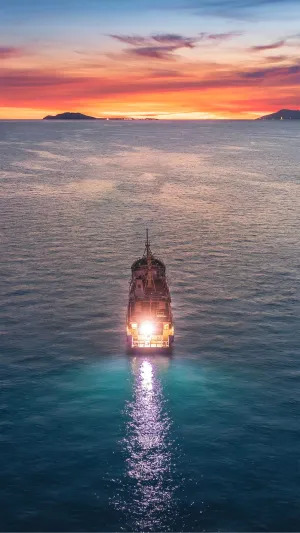With the changes of the times and the progress of science and technology, more and more transportation around us has brought great convenience to everyone's lives.
Such as cars on land, ships in the ocean, airplanes in the sky, rockets and spacecraft.
Today, we have opened a journey to explore new space through transportation.
The history of human use of ships as transportation is almost as long as the history of human civilization. From ancient canoeing to modern transportation ships, it has generally gone through four eras: raft era, sailing era, steam machine ship era, and diesel engine vessels.
If the ancient canoeing is a preliminary test of the ocean, then today's cruise ship is arbitrarily galloping the ocean. In this historical change of tens of thousands of years, humans used wisdom to compose a gorgeous charter after another.
Everyone may have noticed that although the ship is made of steel, the ship is hollow, so it can float on the water. For example, the empty jar can float on the water. When we pinch the cans of the cans, it will sink.
Any object will receive two forces in water, one is its own gravity, and the other is the buoyancy of water.
The larger the size of an object, the greater the buoyancy. The ship has a huge body, but it is much lighter than the solid object of the same volume. Therefore, the buoyancy of the ship is equal to its own gravity, and naturally floats on the water.
The ship is divided into large ships and small ships. But no matter what kind of ship, the ship must have a deck. The deck is also divided into multi -layer. Generally, the deck is divided into three layers.
These three decks ensure that there is a large space on the bottom of the ship. This part of the space is the secret that the ship will not sink.
We all know the calculation formula of buoyancy.
The buoyancy is equal to the gravity of the liquid excretion of the object. When the ship enters the water, the weight of the liquid is greater than its own weight, which means that the buoyancy is greater than the gravity.
As long as the weight of the hull does not exceed the buoyancy, the ship will never sink.
The empty layer of the deck reduces the weight of the ship, and also reserves a part of the buoyancy to ensure that after the ship is loaded with the cargo, it will not sink the bottom due to changes in gravity.
The reason why ships can not sink on the surface are the common effect of gravity and buoyancy. The direction of gravity is down, and the direction of buoyancy is upward.
The hull is also called "floating heart", which is a point that the buoyancy of all the hulls is gathered. The steady ships are generally under the center of gravity, and the two are on the same vertical horizontal line.
However, the sea surface is not calm. When a boat driving was patted by the waves and tilted to the side, why would the boat not fall? Because the volume and shape of the object did not change, the center of gravity of the ship did not change.
But the center of buoyancy is different. When the ship is tilted to the side, the center of buoyancy will turn to the side.
At this time, the center of gravity and the center of buoyancy is not on the same vertical horizontal line. Gravity and buoyancy will jointly support the tilted ships. This is why the ships are shaking, but they will never fall down.





